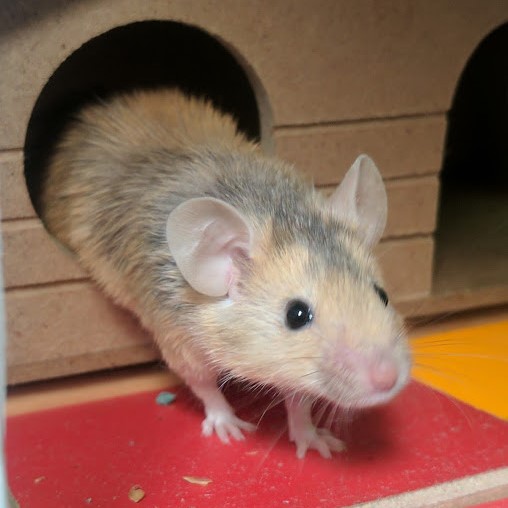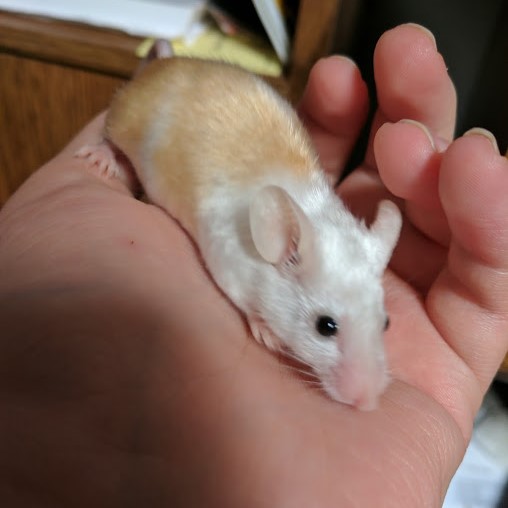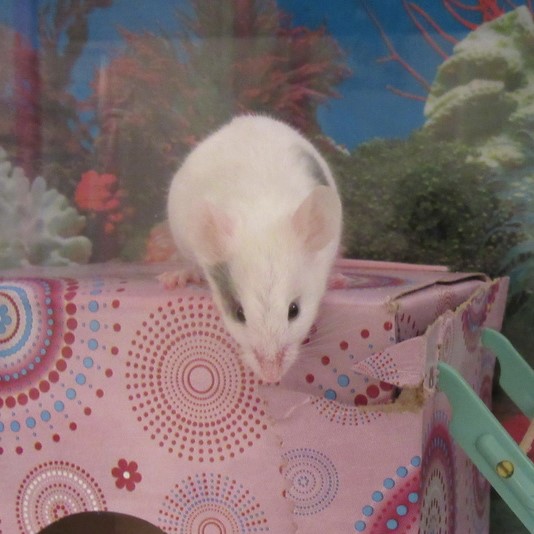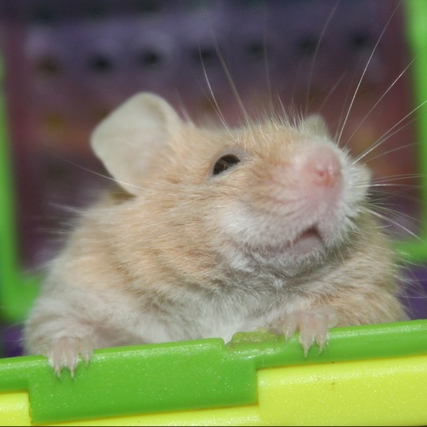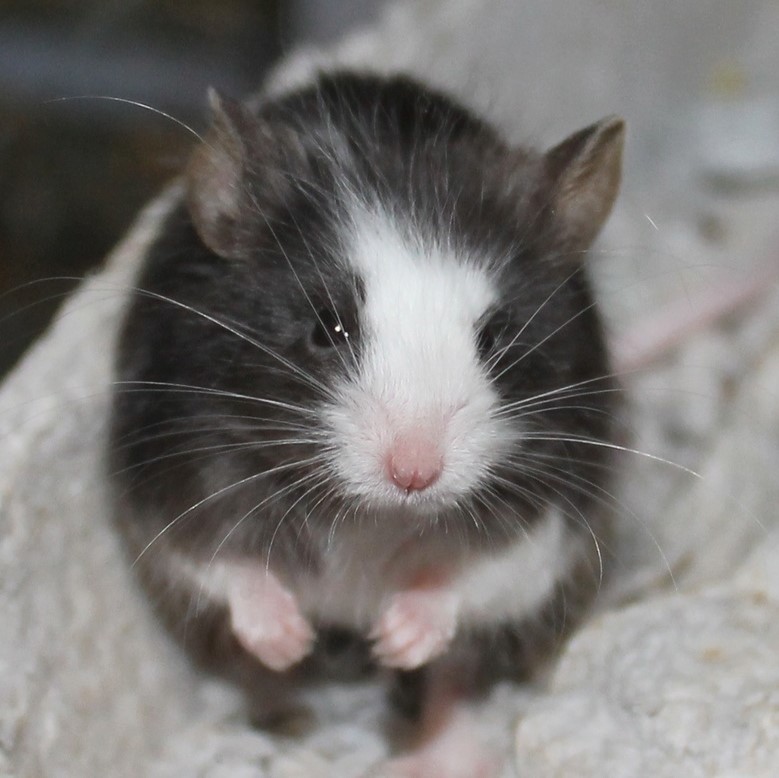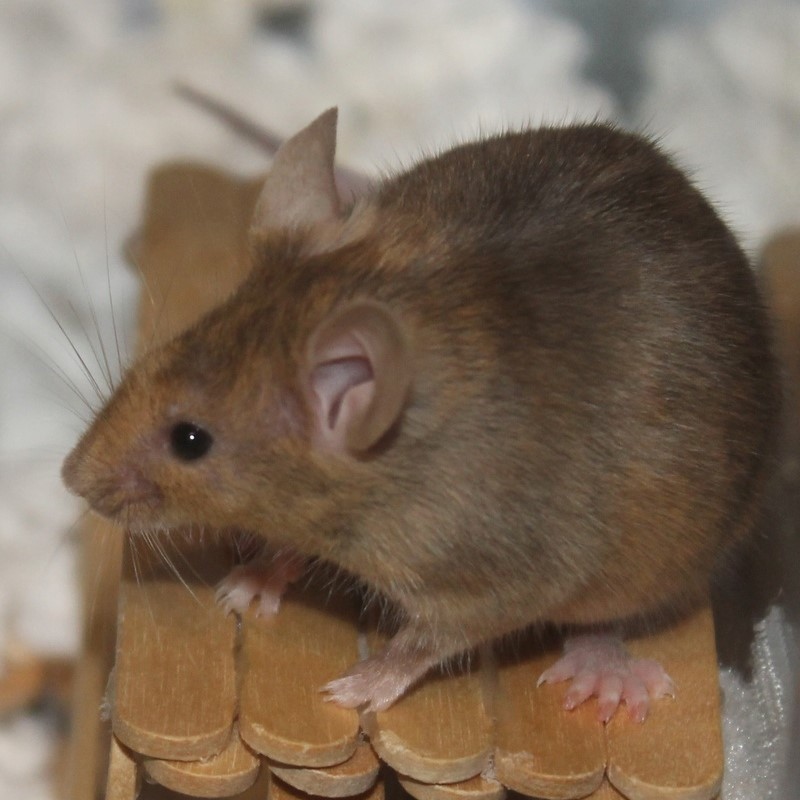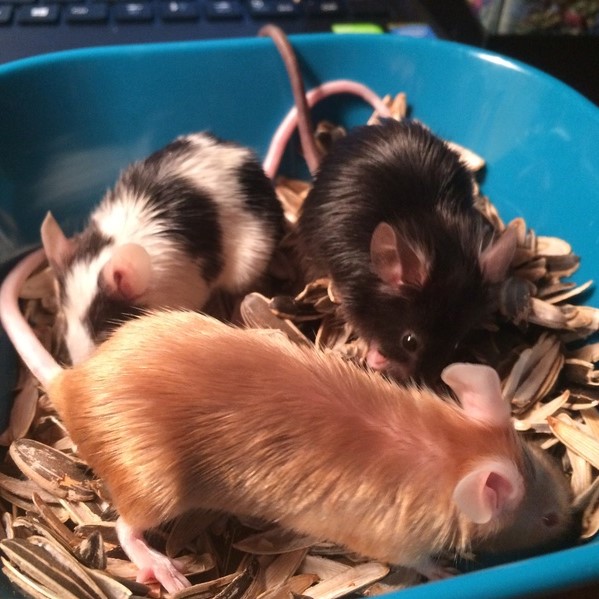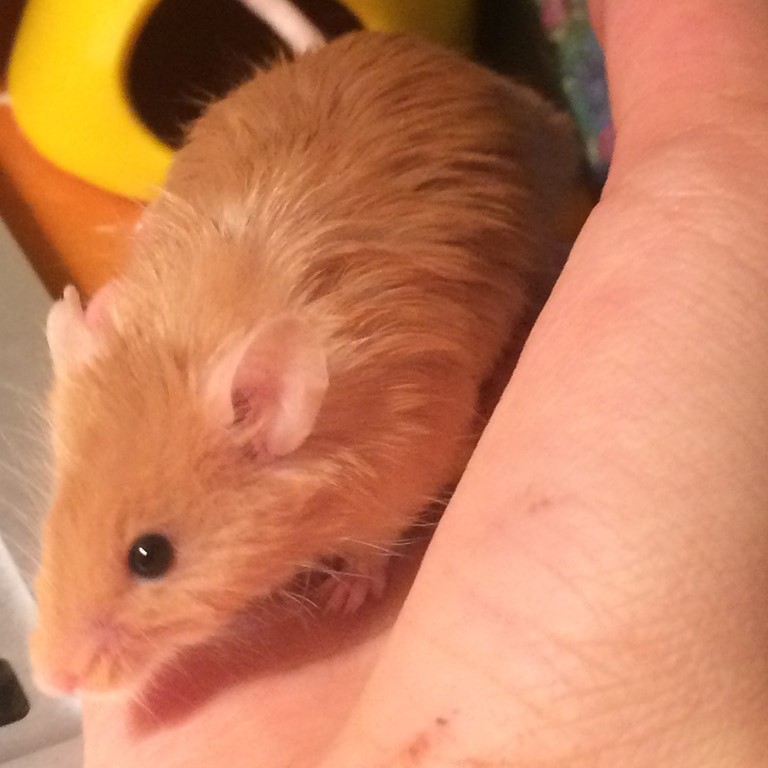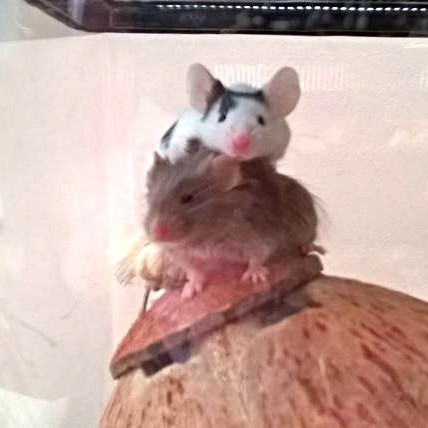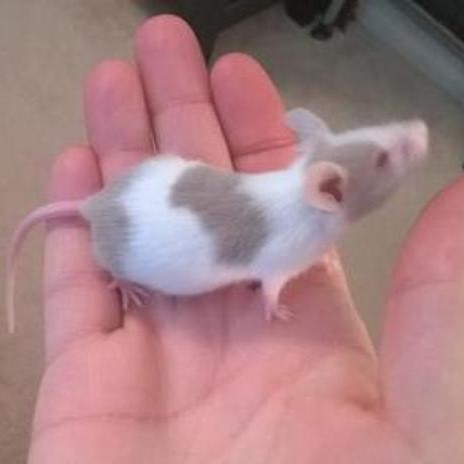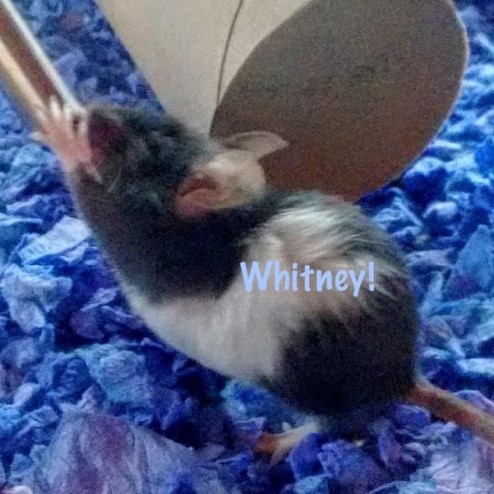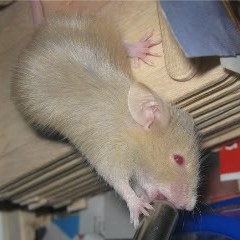Rotating illness
3 posters
Page 1 of 1
 Rotating illness
Rotating illness
Mama was cold and looked like she was ready to die 2 weeks ago but had a full recovery within a day when I kept her warm and gave her honeywater and then some peanut butter.
Now her son kept in a different cage is cold and looked just as sick. He's hiding in my shirt now to warm up and I'll set up the heating pad when he's ready to go back in his cage.
I get sweaty at night and my AC was set to 69f, is that the problem? What temperatures are safe for the mouse area to be? Am I missing something obvious? They're cold to the touch when sick but warm when not sick. The other 3 are totally fine while one gets sick. They usually try to avoid capture when I take them out but when sick they just shake a little and don't try to run around. But I am able to fix it on my own naturally, so it's not a "real" illness, right?
Also I swear when mama was sick I didn't go around touching everyone else, but probably did after she got better, am I spreading something?
Now her son kept in a different cage is cold and looked just as sick. He's hiding in my shirt now to warm up and I'll set up the heating pad when he's ready to go back in his cage.
I get sweaty at night and my AC was set to 69f, is that the problem? What temperatures are safe for the mouse area to be? Am I missing something obvious? They're cold to the touch when sick but warm when not sick. The other 3 are totally fine while one gets sick. They usually try to avoid capture when I take them out but when sick they just shake a little and don't try to run around. But I am able to fix it on my own naturally, so it's not a "real" illness, right?
Also I swear when mama was sick I didn't go around touching everyone else, but probably did after she got better, am I spreading something?
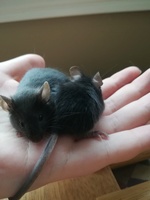
j.n379- Full Member

- Join date : 2018-04-13
Posts : 69
 Re: Rotating illness
Re: Rotating illness
The trick to overcoming hypothermia is to maintain your treatments past the point the mouse appears to have regained its normal temperature. It could take a few weeks.
Raising the AC temperature into the 70s will help, but the warmth that counts in beating hypothermia is not the warmth that comes from outside, but warmth the mouse is able to generate through its metabolic processes. A higher air temperature reduces the amount of inner-generated heat that is lost through the skin, mouth, and nose.
A hypothermic mouse needs to take in more calories, but you cannot accomplish this just by putting extra food in the mousehouse. You have to make the usual amount of food it will eat higher in calories. For instance, replacing the water in the water bottle with sweetened water (as you used on Mama mouse), replacing lower-calorie seeds/nuts with higher-calorie mouse-safe choices, temporarily leaving out vegetables (lots of fiber, no calories!), or mixing up a porridge (I used multi-grain baby cereal powder) sweetened with honey or syrup or a little strained preserves.
The building where I have Web access is about to go into alarm lockdown, so I have to stop now. I'll probably be back tomorrow if you need any questions answered, but there must be many other members who can help you too.
Luck!!
Raising the AC temperature into the 70s will help, but the warmth that counts in beating hypothermia is not the warmth that comes from outside, but warmth the mouse is able to generate through its metabolic processes. A higher air temperature reduces the amount of inner-generated heat that is lost through the skin, mouth, and nose.
A hypothermic mouse needs to take in more calories, but you cannot accomplish this just by putting extra food in the mousehouse. You have to make the usual amount of food it will eat higher in calories. For instance, replacing the water in the water bottle with sweetened water (as you used on Mama mouse), replacing lower-calorie seeds/nuts with higher-calorie mouse-safe choices, temporarily leaving out vegetables (lots of fiber, no calories!), or mixing up a porridge (I used multi-grain baby cereal powder) sweetened with honey or syrup or a little strained preserves.
The building where I have Web access is about to go into alarm lockdown, so I have to stop now. I'll probably be back tomorrow if you need any questions answered, but there must be many other members who can help you too.
Luck!!
_________________
 Zephyr
Zephyr  Coco
Coco  Bobby
Bobby  Noche
Noche  Paiva
Paiva  April
April 
I loved you so / I still do / I always will / 'Twas Heaven here with you.

MerciToujoursMaPetiteBoop- Sr Member

- Join date : 2017-10-18
Posts : 380

 Re: Rotating illness
Re: Rotating illness
Assuming you are actually dealing with hypothermia rather than an illness, the following things occur to me.
Domesticated mice are usually okay in the 65-75 degree range indoors (though even 65 may be too cool for some). It may be that they are being exposed to cooler temps because of a draft from the AC or a fan. That will create a wind chill factor that is sufficient to drop the localized temp in a tank or cage just enough to create problems.
So, first I would check if the cage or tank is in a draft from an AC vent. Cages are more susceptible to a draft because of the open bars, but both kinds of habitats can become significantly cooler if a draft blows on them.
If you find a draft, move the cages or divert the air from the vent or move the fan. Whatever it takes to ensure their home is not constantly being blown on. (Though this is not always possible to achieve, do it if you can.)
Whether or not you find a draft, next I would check to see what the actual temperature is in their habitat at night, when a house is cooler. (Incidentally, the air temp in tanks tends to be about 1 degree warmer than the room air.) Check this by putting a thermometer in there for a number of hours to check the temp--not in the room nearby, but inside the habitat itself. There are cooler and warmer spots in a room due to natural air flow (quite aside from the draft issue), so you want to check things out as close as you can get to where they sleep. To be sure of this baseline, I'd check it a few times in a night to get multiple readings and make sure of what the coldest is they are exposed to. (You may need to get creative about how to secure or protect it from inquisitive nibbling while this goes on, unless you have some kind of quick-read digital thermometer).
(At this point, if you verify that the temperature in their home doesn't really get all that cold, then you will have eliminated hypothermia as a possibility for their illness. Although I rather suspect you will confirm it, instead.)
Once you know what temp they are actually living in, then you'll know how much you need to raise the temp in their habitat. First, think if you can alter the temperature in their room by shutting a vent, or maybe even using a portable heater. (I live in a place where I can't always control the AC, so I actually do use a portable heater to make sure the room never gets too cold for my girls.) Another sometimes helpful thing to do is to cover the tank or cage at night, or perhaps the side facing a draft. This helps reduce heat loss from the habitat.
The most effective thing, though is probably to put a reptile heating pad under the floor of their tank. Put it only at one end (the nest end), so they can get away from the heat if they want to. You can get a pad with a thermostat so you can control the temp. You want to get the ambient temperature in the nest area up to maybe 70 or 72 degrees, possibly warmer depending what they're used to and comfortable with.
Check this temp the same way you did the original measurements--with a thermometer placed as close to the floor in their sleeping area as possible. Thermostat settings are helpful, but they may not be well-calibrated, and also heat radiates at different rates through various materials or layers of things that may be between heat pad and sleeping mouse. So it's always best to measure the actual temperature in the spot where they are spending a lot of time.
By the way, don't try this with a regular heating pad (except in case of emergency, like in the middle of winter and your heat's gone out). Electric heating pads are not designed to be on long-term, nor to have the weight of something like a tank on them constantly, and this can result in a fire hazard or the device burning itself out. Only use a mat made for the purpose (for reptiles).
Hopefully checking temps precisely like this can help lead to a solution. Good luck with them! That lethargy thing can be quite concerning, and it's much better to figure out the cause and fix it, than to have to treat the symptoms.
Domesticated mice are usually okay in the 65-75 degree range indoors (though even 65 may be too cool for some). It may be that they are being exposed to cooler temps because of a draft from the AC or a fan. That will create a wind chill factor that is sufficient to drop the localized temp in a tank or cage just enough to create problems.
So, first I would check if the cage or tank is in a draft from an AC vent. Cages are more susceptible to a draft because of the open bars, but both kinds of habitats can become significantly cooler if a draft blows on them.
If you find a draft, move the cages or divert the air from the vent or move the fan. Whatever it takes to ensure their home is not constantly being blown on. (Though this is not always possible to achieve, do it if you can.)
Whether or not you find a draft, next I would check to see what the actual temperature is in their habitat at night, when a house is cooler. (Incidentally, the air temp in tanks tends to be about 1 degree warmer than the room air.) Check this by putting a thermometer in there for a number of hours to check the temp--not in the room nearby, but inside the habitat itself. There are cooler and warmer spots in a room due to natural air flow (quite aside from the draft issue), so you want to check things out as close as you can get to where they sleep. To be sure of this baseline, I'd check it a few times in a night to get multiple readings and make sure of what the coldest is they are exposed to. (You may need to get creative about how to secure or protect it from inquisitive nibbling while this goes on, unless you have some kind of quick-read digital thermometer).
(At this point, if you verify that the temperature in their home doesn't really get all that cold, then you will have eliminated hypothermia as a possibility for their illness. Although I rather suspect you will confirm it, instead.)
Once you know what temp they are actually living in, then you'll know how much you need to raise the temp in their habitat. First, think if you can alter the temperature in their room by shutting a vent, or maybe even using a portable heater. (I live in a place where I can't always control the AC, so I actually do use a portable heater to make sure the room never gets too cold for my girls.) Another sometimes helpful thing to do is to cover the tank or cage at night, or perhaps the side facing a draft. This helps reduce heat loss from the habitat.
The most effective thing, though is probably to put a reptile heating pad under the floor of their tank. Put it only at one end (the nest end), so they can get away from the heat if they want to. You can get a pad with a thermostat so you can control the temp. You want to get the ambient temperature in the nest area up to maybe 70 or 72 degrees, possibly warmer depending what they're used to and comfortable with.
Check this temp the same way you did the original measurements--with a thermometer placed as close to the floor in their sleeping area as possible. Thermostat settings are helpful, but they may not be well-calibrated, and also heat radiates at different rates through various materials or layers of things that may be between heat pad and sleeping mouse. So it's always best to measure the actual temperature in the spot where they are spending a lot of time.
By the way, don't try this with a regular heating pad (except in case of emergency, like in the middle of winter and your heat's gone out). Electric heating pads are not designed to be on long-term, nor to have the weight of something like a tank on them constantly, and this can result in a fire hazard or the device burning itself out. Only use a mat made for the purpose (for reptiles).
Hopefully checking temps precisely like this can help lead to a solution. Good luck with them! That lethargy thing can be quite concerning, and it's much better to figure out the cause and fix it, than to have to treat the symptoms.
Teramis- Jr Member

- Join date : 2016-04-09
Posts : 47
 Similar topics
Similar topics» Basil's Illness
» Illness & Separating Mice
» Mental Illness and Pet Keeping
» Risk of illness and prevention
» Sudden Illness, loss of balance
» Illness & Separating Mice
» Mental Illness and Pet Keeping
» Risk of illness and prevention
» Sudden Illness, loss of balance
Page 1 of 1
Permissions in this forum:
You cannot reply to topics in this forum










